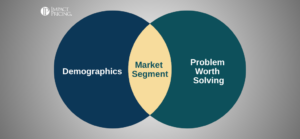You can listen to the full audio version of this blog we call — Blogcast.
In the B2B world, value is measured in incremental profit. If you are selling to other businesses, you should know how your company helps their business make more profit. This is a powerful attitude, but it’s not the complete story.
For those of us selling enterprise or complex solutions, we are likely selling to several different buyers within the same company. For instance, if you’re selling a CRM system, you are likely selling to the marketing department, the sales department, and the IT department, among others.
If you’re talking with an individual marketing person at a prospect, they are probably not focused on the total amount of profit you may be able to make for the overall company. Instead, they are likely focused on what they think will improve their ability to market or will make their job easier.
The same thing occurs when you talk with someone in IT or in sales. They know their own job and want help doing it or in reaching their goals, but they may not be thinking about the big picture.
In many ways, this is more similar to a B2C sale. The buyers are setting their own criteria. They don’t have to create a business case for their own opinion and are therefore comfortable with some ambiguity or irrationality in their decision-making.
But, the value of these personas still depends on the problems they want to solve and the results they want to achieve. So using the value table format (Solution, Problem, Result, Value) is extremely helpful. You may not be able to calculate value in the same way for each persona, but you absolutely want a list of the problems they face and the results they can achieve.
So does that mean for these types of products, you shouldn’t consider the value you bring to the overall organization?
Of course, not.
Consider this: Let’s say sales does a great job convincing people in each department your product is the best fit, is the deal done? Probably not. For any high-priced item, executives will get involved and want to see the business case. This is where you will want to quantify value as incremental profit for the organization as a whole. And don’t wait for one of your buyer’s to ask for it or, worse, try to create it on their own. Provide this proactively.
Remember, unless you are selling low-priced items where an individual buyer doesn’t need to justify the decision to higher-ups, a business case will be useful. And a business case that talks about incremental profit (derived from the value table format) will be powerful.
Bottomline: B2B companies trade money for incremental profit, but you still need to address the problems and desired results of the individuals. Luckily, value tables help with both.
Share your comments on the LinkedIn post.
Now, go make an impact!
 Tags: selling, value
Tags: selling, value













